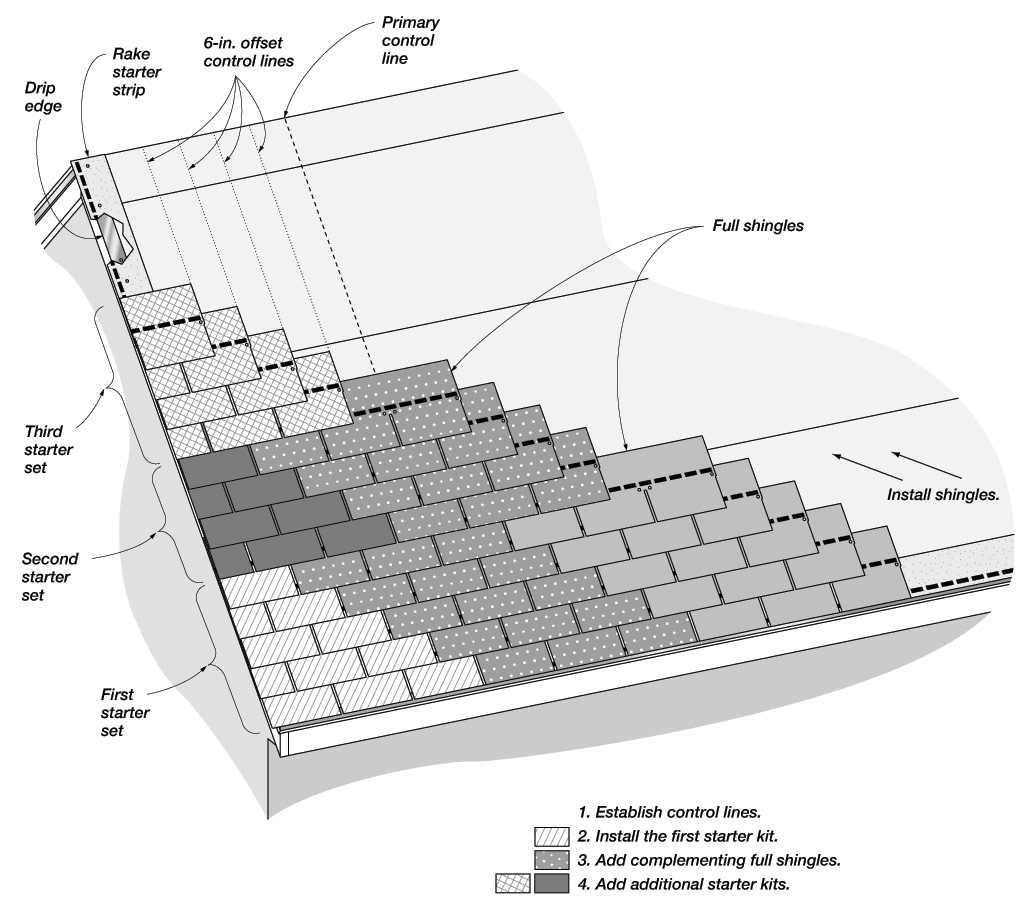Roofing is a critical aspect of any home, providing protection against the elements while adding to its aesthetic appeal. One popular roofing material is tab shingles, known for their durability, versatility, and ease of installation. This comprehensive guide will walk you through the process of installing tab shingles, from the preparation stage to the finishing touches. Wikipedia.org
Part 1: Preparation
1.1 Safety First
Before you begin, ensure you have the necessary safety gear, including a sturdy ladder, a harness, gloves, and non-slip shoes. Safety is paramount when working at heights, so take all necessary precautions to avoid accidents.
1.2 Tools and Materials
Gather the essential tools and materials required for the job, including installing tab shingles, roofing nails, a nail gun or hammer, roofing adhesive, a utility knife, a chalk line, a pry bar, and a roofing nailer.
1.3 Roof Inspection
Start by inspecting your roof for any existing damage or issues. Repair any leaks, rot, or structural problems before you begin the shingle installation.
1.4 Ventilation and Underlayment
Proper ventilation is essential to maintain your roof's longevity. Make sure there are adequate roof vents to prevent moisture buildup. Install an underlayment to provide an extra layer of protection against water and ensure your roof's lifespan.
1.5 Measuring and Calculation
Determine the quantity of shingles you'll need by measuring your roof's dimensions. Calculate the square footage and take into account an additional 10% for waste.
Part 2: Installation
2.1 Starter Shingles
Start by installing starter shingles at the eaves of your roof. These are crucial for preventing water from seeping underneath the first row of shingles. Align them carefully and secure with roofing nails.
2.2 Chalk Lines
Use a chalk line to create a guideline for your shingle installation. This ensures that your shingles are installed in straight, even rows, which is crucial for both aesthetics and functionality.
2.3 Shingle Placement
Begin placing the shingles, starting at the eaves and working your way up to the ridge. Overlap each row of shingles to prevent water infiltration. Follow the manufacturer's guidelines for the correct overlap.
2.4 Nailing
Nail each shingle securely, placing nails in the designated nail strip on the shingle. Be sure to use the appropriate length and type of roofing nails, and follow your local building codes for nail spacing.
2.5 Hip and Ridge Shingles
When you reach the hip and ridge of your roof, install hip and ridge shingles to provide a finished look and extra protection. These shingles are specially designed to cover these areas and can be trimmed as needed.
2.6 Valleys
Valleys are areas of high water flow and are particularly vulnerable to leaks. Install metal flashing or specialized valley shingles to protect these regions from water damage.
Part 3: Finishing
3.1 Sealing and Adhesive
To enhance the wind resistance and waterproofing of your roof, apply roofing adhesive beneath the shingles, especially in high-wind or rain-prone areas. This additional layer of protection is essential to prevent water infiltration.
3.2 Flashing
Properly installed flashing is critical around roof penetrations, such as chimneys, vents, and skylights. Ensure that flashing is in place and properly sealed to prevent leaks.
3.3 Ventilation and Ridge Cap
Proper ventilation is crucial to prevent moisture buildup in your attic. Install roof vents as necessary and finish the ridge with ridge caps to provide a clean, finished look to your roof.
3.4 Clean-Up
Once the installation is complete, remove all debris and leftover materials from your work area. This includes old shingles, nails, and any other waste created during the installation.
3.5 Inspection
Finally, conduct a thorough inspection of your work to ensure the shingles are properly aligned, nailed, and sealed. Look for any damaged or misaligned shingles and make necessary repairs.
Conclusion
Installing tab shingles on your roof is a manageable DIY project if you're equipped with the right knowledge, tools, and materials. It's essential to prioritize safety, proper preparation, and attention to detail to ensure the longevity and effectiveness of your new roof. When done correctly, tab shingles can provide both aesthetic appeal and reliable protection from the elements, adding value to your home for years to come. Visit official website onlyroofing.com

